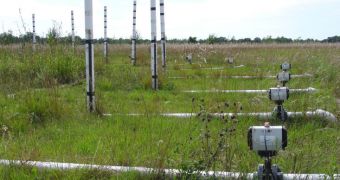The conclusions of an 11-year experiment conducted in the United States indicate that around a dozen grassland plant species play a role in influencing the planet's climate. The investigation was carried out on 13 species of plants, including yarrow, Indian grass, thimbleweed and wild lupine.
Yarrow, for example, is an appreciated plant in every sense, since it has a lot of beneficial properties. It can help improve the quality of the soil it's planted in, and has the ability to repel unwanted insects, while at the same time making itself attractive to beneficial ones.
But, together with the other 12 species in this research, it can also play a role at a much larger scale. The fact that it can influence climate only goes to show the complexity of the interactions that in the end determine how the planet will behave.
The new study was carried out by experts at the University of Wisconsin in Eau Claire and University of Minnesota in Twin Cities, who installed a series of pipes in a lot of land containing these plants.
These pipes were delivering more carbon dioxide into the area, which is the equivalent of what will happen if we don't reduce greenhouse gas emissions soon. The experts were interested in analyzing how the plants would respond to the tweaked environment.
Interestingly, it was found that the vegetation was less capable of adapting to the demands of removing excess CO2 from the atmosphere than current models suggest. In other words, the more CO2 goes in the air, the smaller the amount these plants can absorb.
“They have major implications for models of future climate. Current state-of-the-art climate models assume that vegetation will soak up much of the extra CO2 we put into the air from fossil fuel burning,” explains University of Minnesota forest ecologist Peter Reich.
The investigator is also a coauthor of a new paper detailing the findings, which is published in the latest issue of the scientific journal Global Change Biology. The first author of the work was UWEC biologist Tali Lee.
She believes that these results “show that the capacity of some terrestrial ecosystems to absorb the extra CO2 may be less than the models assume.” As a result, computer models now used to inform policies may need to be revised to reflect the new reality.
“Generalities about plant responses to global change have often proved elusive. Now we have convincing evidence that the photosynthesis of typical grassland species will not respond as we had thought,” explains Henry Gholz.
“The cautionary implications for global climate models are clear.” adds the expert, who is a program director in the US National Science Foundation's (NSF) Division of Environmental Biology (DEB).

 14 DAY TRIAL //
14 DAY TRIAL //